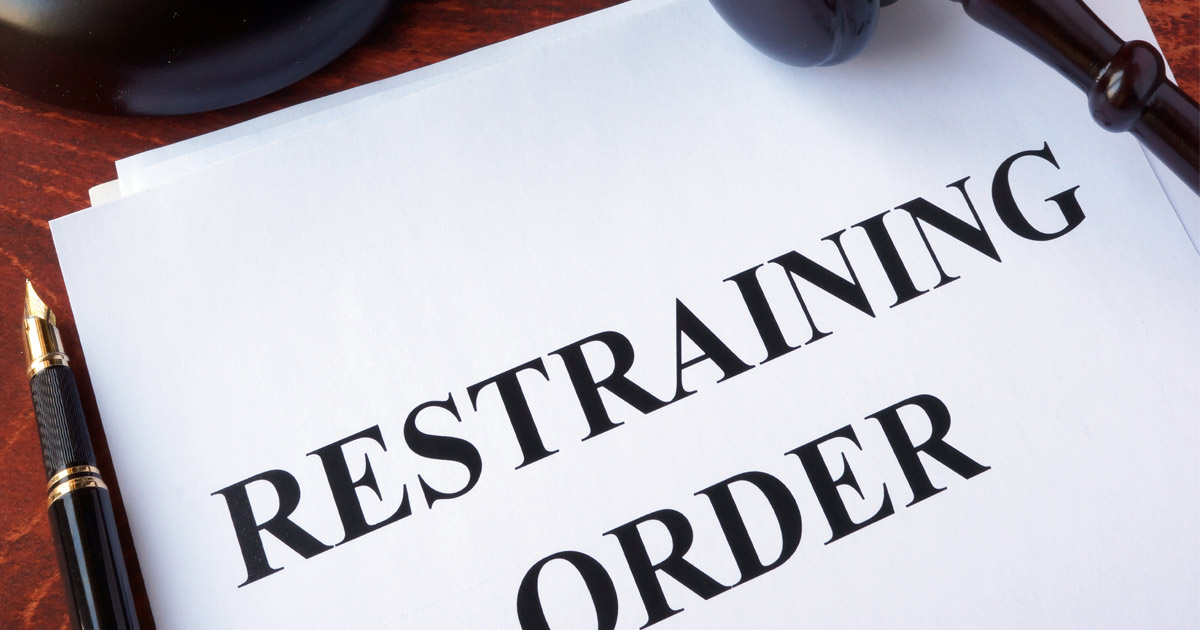A victim of domestic violence has legal avenues available for them to seek protection from their abuser, especially in a divorce case. One such protection is the issuance of a restraining order. An individual who fears for their safety during a divorce can seek a restraining order to prevent their ex-spouse from being able to gain access to them or their children.
A domestic violence restraining order can be issued to keep a dangerous romantic partner or former romantic partner from contacting, harassing, confronting, or otherwise gaining access to the person requesting protection. The order restricts the offender from any protected individual’s workplace, school, or home. The order may also affect the offender’s ability to own or access a firearm. If the order is violated, the subject of the order can be arrested and prosecuted.
When Should I Issue a Restraining Order Against Someone?
A domestic violence restraining order can be put in place to protect someone who has been the victim of violence, stalking, kidnapping, terroristic threats, harassment, and other violations. The order is filed specifically against the individual that perpetrated the misconduct to prevent that offender from approaching or intimidating the victim. In some divorce cases, a restraining order may be necessary.
How Long Does a Restraining Order Last?
There are two different types of restraining orders:
Temporary Restraining Order: A temporary restraining order starts as soon as it is issued. At the time a temporary restraining order is granted, a hearing is scheduled to determine if the order should continue. The hearing is typically scheduled within 10 days.
Final Restraining Order: At the hearing, a judge will hear from both parties and examine evidence to determine if the cause for the order is valid. If so, the judge will issue a final restraining order, which can last indefinitely. A final restraining order can be overturned if a motion is filed by one of the parties and a judge rules in favor of nullifying the order.
How can I Obtain a Domestic Violence Restraining Order?
In order to secure a restraining order in New Jersey, the person seeking protection can file a petition in the county in which they live or the abuser resides, or where the abuse occurred. At the courthouse, the filer should bring their photo identification card along with all relevant information on the abuser, such as their home address, employment location, phone number, as well as car information. Any knowledge of drug abuse or gun ownership is also relevant information to provide. Outside of family court hours, a petition can be filed with municipal court or with the police department.
If the person in need of restraining order protection cannot physically appear to file with the court, a judge may still be able to issue the order based on sworn written statement from the requesting party or testimony. If one is going through a tumultuous divorce, they should speak to a lawyer about their concerns.
Moorestown Divorce Lawyers at Stockton Family Law Help Clients Obtain Restraining Orders During Divorce
If you are the victim of domestic violence, you have a right to file for a restraining order against your abuser. One of our dedicated Moorestown divorce lawyers at Stockton Family Law can help you obtain a restraining order to protect you and your children. For an initial consultation, contact us online or call us at 856-412-5052. Located in Moorestown, New Jersey, we serve clients throughout South Jersey, including Mount Laurel, Burlington County, and Camden County.






